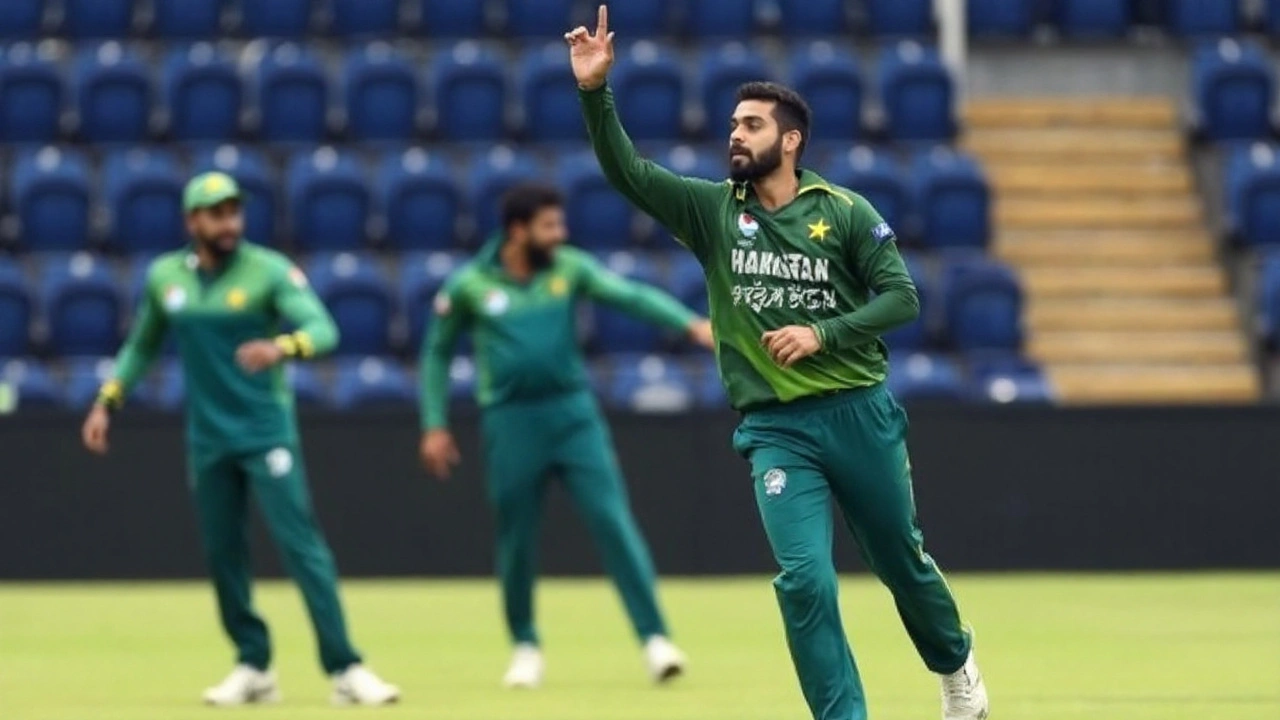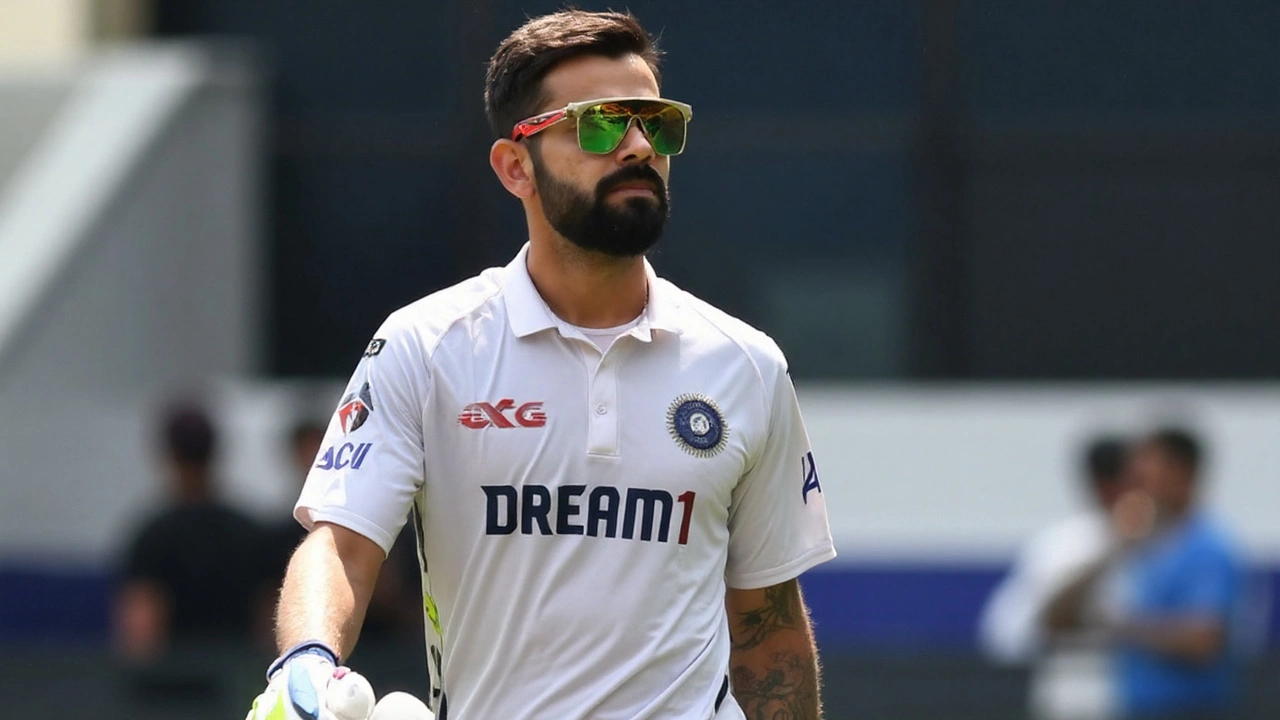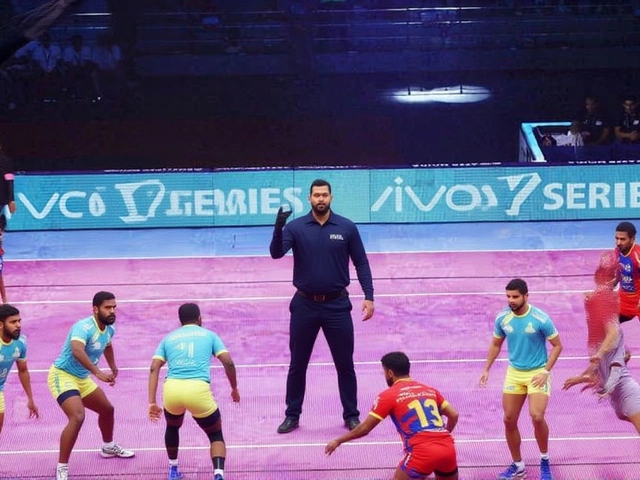A young leg-spinner tried to needle a modern batting giant, and the moment that stuck wasn’t a stare-down—it was a handshake. In Dubai on February 23, 2025, Pakistan’s Abrar Ahmed admitted he set out to provoke Virat Kohli during a high-pressure Champions Trophy clash. Kohli didn’t bite. He produced an unbeaten hundred, guided India to a six-wicket win chasing 242, and then walked up to the bowler to appreciate his spell. That’s the snapshot that ricocheted across timelines: intense cricket followed by quiet respect.
The duel: mind games, tight lines, and a chase mastered
The game already had an edge. Pakistan, coming off an opening defeat to New Zealand, badly needed a result. India were 31 for 1 after five overs when Kohli walked in—noise rising, stakes climbing. Abrar, Pakistan’s canny leg-spinner with a bag of variations, was ready. He later told Telecom Asia Sport he deliberately tried to get under Kohli’s skin. It’s a common ploy in big games: unsettle the batter, disrupt the rhythm, create a mistake.
Kohli gave him nothing. No chatter. No flash of anger. Just busy, controlled batting. Singles tucked into gaps, the occasional firm boundary, a tempo that never looked rushed. The unbeaten century took 111 deliveries—measured without being passive, assertive without appearing risky.
For Pakistan, Abrar was the standout. He finished with 1 for 28 in his 10 overs, the most frugal spell of the night. He outfoxed Shubman Gill with a sharp, drifting leg-break and let the emotion show with an aggressive send-off—something that drew heat while the game was still in balance. But the rest of his spell was all discipline: length teasing the front foot, pace changes messing with timing, just enough turn to keep India’s batters guessing.
Kohli has faced every shade of spin, from classical leg-breaks to wristy mystery. The pattern here was familiar. He stayed side-on longer, played late, and used the crease. He denied the bowler what he craves most against a set batter: dots that pile pressure. When Abrar floated it full outside off, Kohli opened the face to run it square. When the length sat up, he punched through cover or worked midwicket. The scoreboard kept moving, and Pakistan’s best chance—suffocating India through the middle—never quite took hold.
The context matters. In Dubai, white-ball surfaces tend to slow through the day but can quicken under lights, especially if there’s a hint of dew. Spinners often enjoy a strong first spell; the batters then claw back as the ball slides on. Abrar nailed the first half. Kohli owned the rest.
By the time India accelerated, the chase was theirs. No dramatic finish, no flurry of risks—just a steady lowering of the target until the result looked inevitable. Six wickets in hand told the story of control.
Along the way, Kohli stacked up milestones that would usually dominate the headlines:
- His 51st century in ODI cricket.
- His fourth ODI hundred against Pakistan.
- His first ton in the Champions Trophy.
- Became the fastest player to reach 14,000 ODI runs.
Strip out the numbers, and the innings still stands up as a lesson in chase management. He absorbed the early squeeze, neutralized the threat bowler, and let the target shrink without giving Pakistan a burst of momentum. It’s not just execution; it’s game sense honed over a decade of big-match batting.

The moment after: a handshake, a post, and a narrative flipped
When Abrar’s ten overs ended, Kohli walked over, shook his hand, and acknowledged the spell. It was brief and unforced. In a rivalry that often leaks emotion, the gesture reset the tone. Cameras caught it. So did fans across borders.
Days later, Abrar put his feelings into words on Instagram. “Bowling to my childhood hero Virat Kohli. Grateful for his appreciation—his greatness as a cricketer is only matched by his humility as a person. A true inspiration on and off the field!” The post carried pictures from their exchange in Dubai. Coming from a player who had taken flak for a fiery send-off to Gill earlier in the match, the message landed with even more weight.
This is the paradox of cricket’s fiercest contest: it’s a cauldron and a classroom. Sledging is part of the game, and bowlers, especially spinners, test the mind as much as the technique. Former players say it all the time—if the batter is comfortable, you’ve already lost half the battle. Abrar tried to disturb the comfort. Kohli refused to let the contest leave the pitch.
The reaction online was swift and split in predictable ways. Indian fans celebrated the hundred and the milestone cascade. Pakistani fans, despite the loss, rallied behind Abrar’s spell—10 overs for 28 in a chase of 242 is premium control. The handshake and the Instagram post became the bridge: a reminder that rivalry doesn’t have to be rancour.
For Pakistan, the defeat stung because of the stakes. Coming off a loss to New Zealand, they needed to reset their campaign; instead, the path narrowed. Their takeaway, though, wasn’t all bleak. Abrar, still early in his international white-ball journey, showed big-stage temperament. If Pakistan build their middle-overs plans around him—supported by sharp fielding and tighter end-overs discipline—they’ll stay in most games.
For India, this was the template they trust. Early damage contained, middle overs managed, chase calibrated. The top order didn’t panic after the first wicket. The singles kept flowing even when boundaries dried up. Once the equation dipped beneath a run-a-ball, Pakistan were playing catch-up with old ball and thin margins.
Abrar’s admission that he tried to provoke Kohli adds a candid layer to the story. We rarely hear the tactical mind games spelled out this clearly. It takes some humility to say, “I went at him—and it didn’t work.” It also underlines why this rivalry stays compelling: newer characters bring fresh plans, and the veterans keep finding answers.
Technically, this was a study in how elite batters handle high-quality spin. Kohli didn’t lunge. He didn’t get dragged across his stumps. He refused the trap balls and waited for line errors. Against leg-spin, he trusted the inside-out drive when the ball was wide and flat-batted the shorter lengths without overhitting. It sounds simple. It rarely is.
One more piece deserves mention: the body language. Kohli is known for intensity, but here it was the quiet kind—eyes narrowing between balls, quick nods to partners, no extra theater. Abrar, for his part, kept returning to the top of his run with purpose, changing angles, never rushing his routine. The camera would cut back and forth: a bowler searching, a batter calculating. That’s the cricket many of us show up for.
Will this become the defining snapshot of the 2025 Champions Trophy? It’s early to crown anything. But in a tournament built on narratives, this one has legs: a young spinner tries the oldest trick in the book, the senior pro answers with bat and grace, and both walk away bigger for it.



